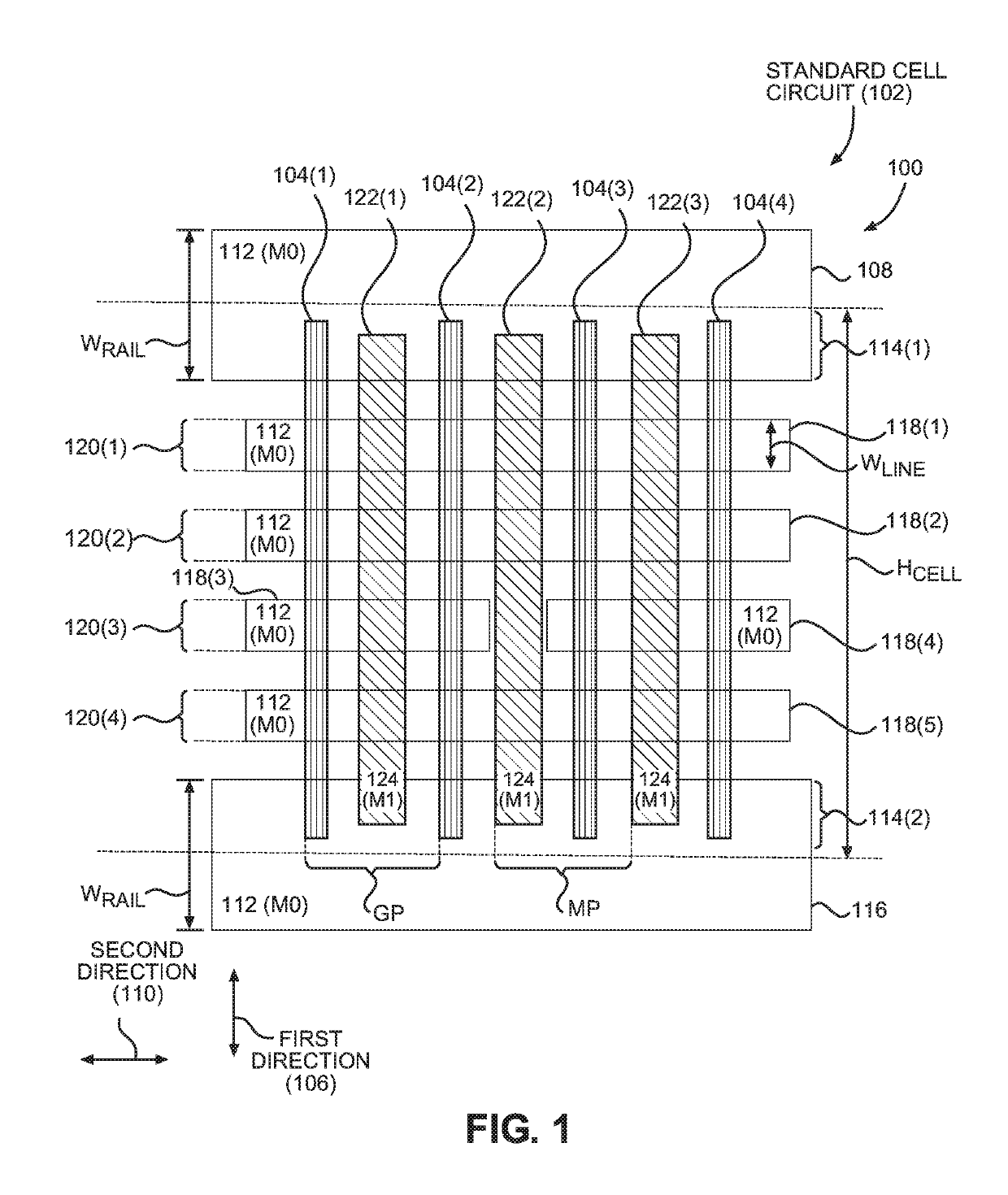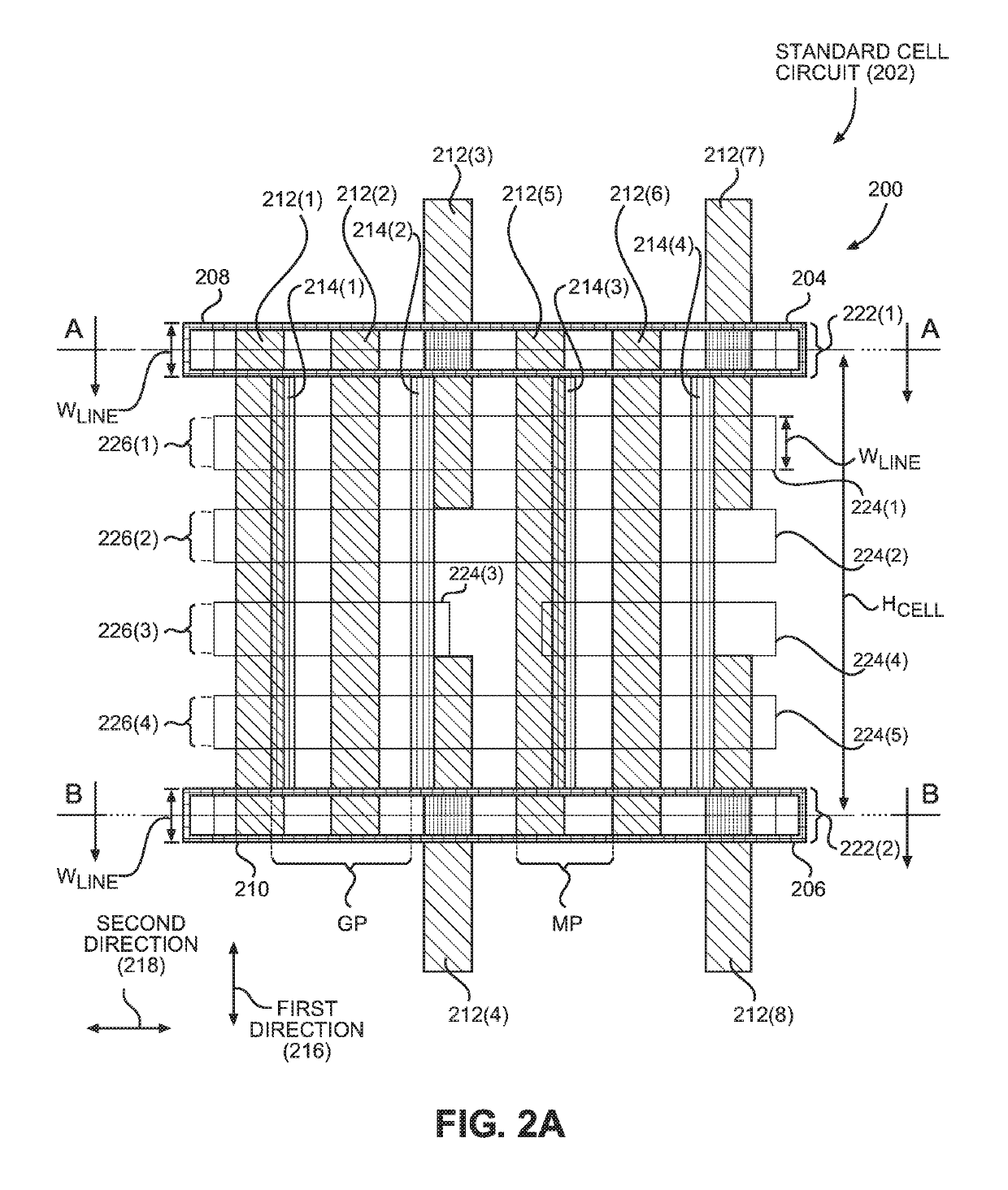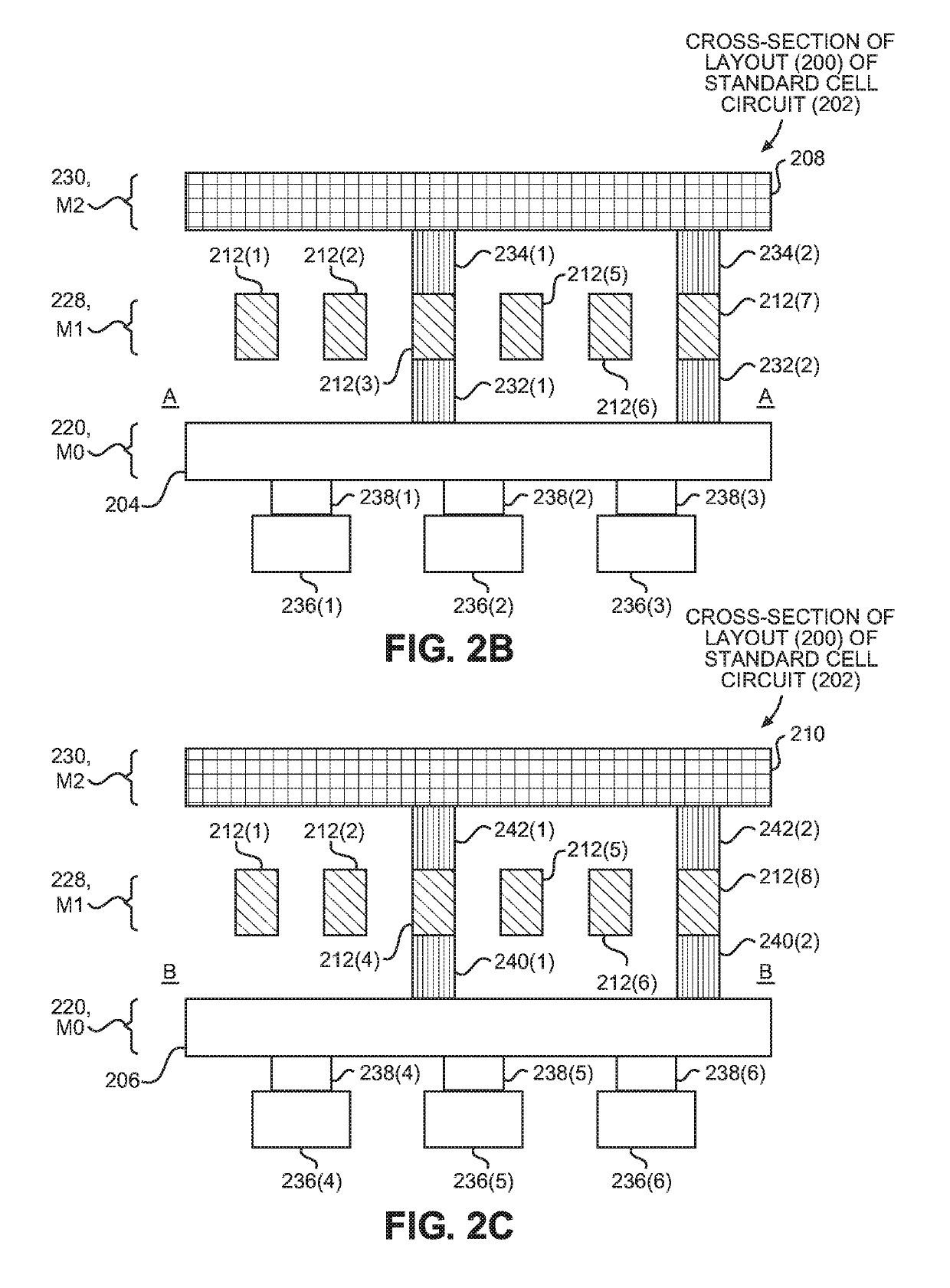Standard cell circuits employing voltage rails electrically coupled to metal shunts for reducing or avoiding increases in voltage drop
a technology of voltage rails and voltage rails, which is applied in the direction of electrical equipment, semiconductor devices, semiconductor/solid-state device details, etc., can solve the problems of increasing voltage drop, reducing the height of a conventional standard cell circuit may face limitations, and the width of a conventional standard cell circuit cannot continue to scale down due to gate pitch limitations, etc., to reduce or avoid the effect of increasing the conductive area reducing the resistance of the voltage rails
- Summary
- Abstract
- Description
- Claims
- Application Information
AI Technical Summary
Benefits of technology
Problems solved by technology
Method used
Image
Examples
Embodiment Construction
[0018]With reference now to the drawing figures, several exemplary aspects of the present disclosure are described. The word “exemplary” is used herein to mean “serving as an example, instance, or illustration.” Any aspect described herein as “exemplary” is not necessarily to be construed as preferred or advantageous over other aspects.
[0019]Aspects disclosed herein include standard cell circuits employing voltage rails electrically coupled to metal shunts for reducing or avoiding increases in voltage drop. In particular, standard cell circuits described herein include metal lines disposed with a metal pitch, such that the number of metal lines allows some metal lines to be dedicated to electrically coupling voltage rails to metal shunts to increase the conductive area of the voltage rails. The increased conductive area reduces the resistance of the voltage rails, which reduces the voltage drop across the voltage rails. In this manner, the voltage rails can have a relatively smaller...
PUM
 Login to View More
Login to View More Abstract
Description
Claims
Application Information
 Login to View More
Login to View More - R&D
- Intellectual Property
- Life Sciences
- Materials
- Tech Scout
- Unparalleled Data Quality
- Higher Quality Content
- 60% Fewer Hallucinations
Browse by: Latest US Patents, China's latest patents, Technical Efficacy Thesaurus, Application Domain, Technology Topic, Popular Technical Reports.
© 2025 PatSnap. All rights reserved.Legal|Privacy policy|Modern Slavery Act Transparency Statement|Sitemap|About US| Contact US: help@patsnap.com



